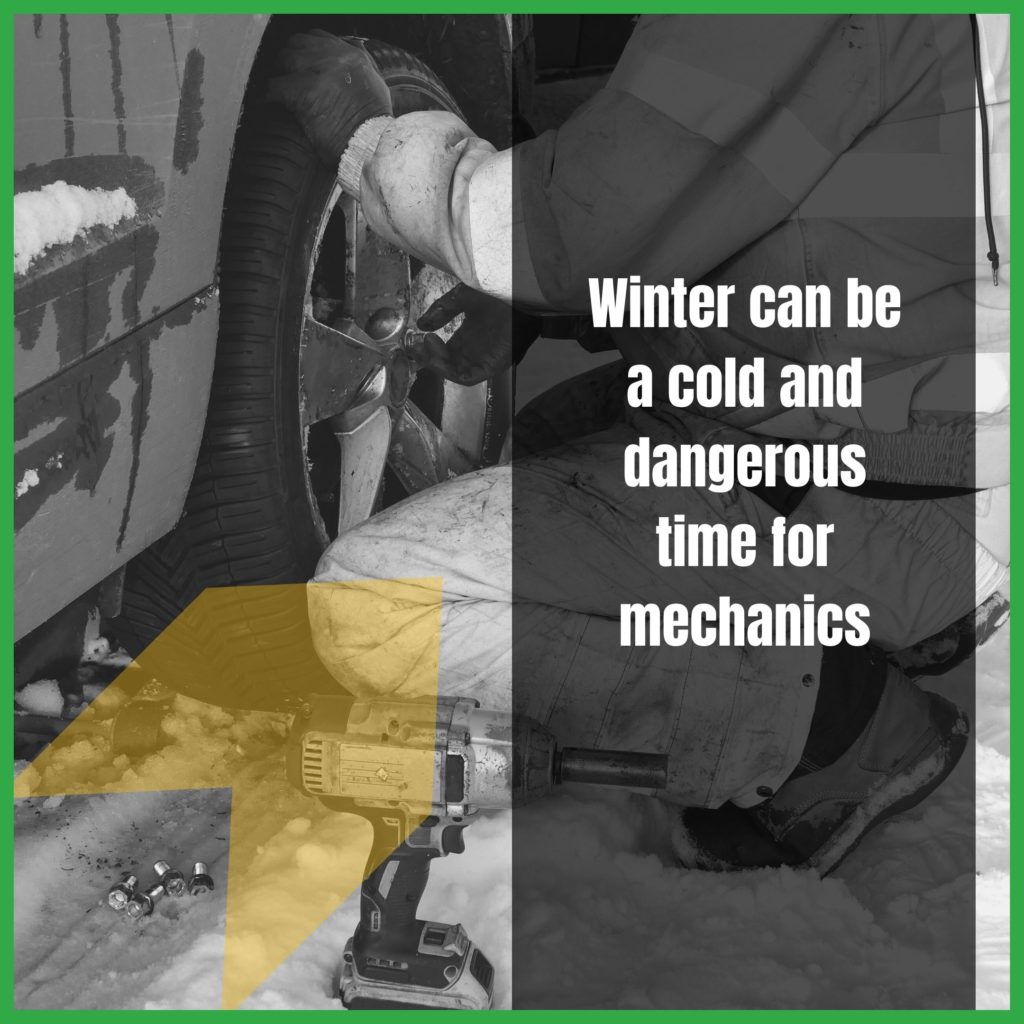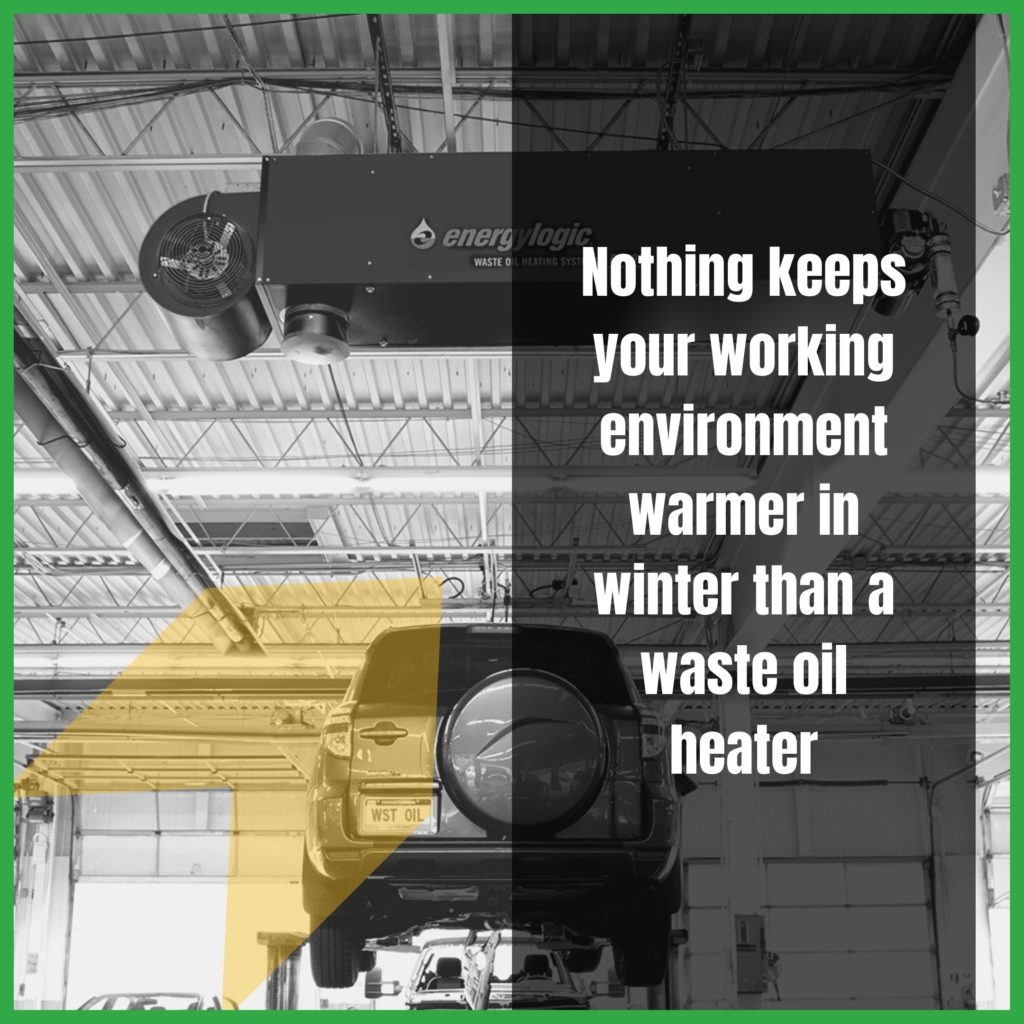
Most mechanics work in open-air shop environments which turn into ice boxes during the winter months. Working in a chilly building can make it difficult for mechanics to stay focused, increasing their risk for injury. Additionally, an uncomfortable work environment can result in poor productivity, major mistakes, and illness.
Unfortunately, work doesn’t stop just because the sunny weather does, but numb hands don’t help get the job done either. Don’t fret yet – here are 10 things you can do to stay warm at work this winter.
Bundle up in layers.
The simplest solution to fight the cold is by wearing layers. Start with a snug-fitting base layer. Add a lightweight wool sweater or flannel shirt for the middle layer. This layer should fit loosely to allow for complete range of motion. Finish with an outer layer of insulated overalls and/or a windproof jacket. A bonus to layering is you can always strip off layers if you start feeling too warm or add new ones when the temperature drops.
Use hand and toe warmers.
Slip them into your gloves or boots to warm up chilled hands and feet quickly. Warmers can last anywhere from six to 12 hours, depending on the brand and usage.

Cover your head, ears, and neck.
Exposed skin is frozen skin when working in the cold, so keep exposed areas warm by wearing hats, beanies, scarves, and earmuffs. These will protect you from the winter temperatures and keep warmth from escaping your body as quickly. And remember your layers – you can wear a beanie and a hat, and several scarves if temperatures dip too low.
Keep moving.
It may seem obvious, but an important key to staying warm is moving your body. Moving produces heat and keeps you warm. Try not to take long sedentary breaks, and don’t shy away from quick spurts of exercises, like jumping jacks or jogging in place. The more you move, the warmer you will be – and if things get too toasty, you can always remove a layer or two.
Buy insulated boots.
There aren’t many situations more uncomfortable than numb feet from the cold. While toe warmers and wool socks help, a good pair of insulated boots is invaluable in the winter. Make sure they are waterproof too, especially if you will be working in snowy regions. Your feet will thank you, and you will be staying dry in addition to keeping warm.

Wear proper gloves.
You may be thinking that the thicker the glove the better, right? Not necessarily! The thicker the glove the less dexterity, so consider the trade-off between warmth and mobility. An insulated glove made of neoprene is a good middle-ground option for mechanics. Neoprene is rubber-like and provides a layer of insulation to keep you warm. With the added benefits of being waterproof and thin, you will keep your hands dry and be able to work more easily with neoprene gloves.
Drink warm beverages.
Sipping hot tea or coffee can keep you feeling cozy. While not substantial enough on its own, a warm beverage can help take the edge off the cold.
Purchase an Ozark Trail or Yeti mug.
You may be wondering how you will keep your beverages warm – if you’re cold, surely the temperature of your coffee is, too. Try using an Ozark Trail or Yeti mug to keep your drinks piping hot all day. These travel mugs are vacuum-sealed and insulated to keep drinks hot for up to 6 hours or more at room temperature.
Invest in a pair of insulated coveralls.
Insulated coveralls fit loosely over your clothes to provide an extra layer of protection. Insulating power can range from 200g to over 1000g, so be sure to choose a level that works best with your environment. Also look for features such as front and side zippers that can provide extra ventilation if you start to get too warm. If you don’t have coveralls, tucking your shirt in so cold air can’t creep under your clothes is a close alternative.

Install a waste oil heater or boiler.
While layers, hot beverages, hand warmers, and insulated boots are all winter essentials for beating the cold, nothing keeps you warmer than a waste oil heater or waste oil boiler. Waste oil heaters and waste oil boilers burn used oils efficiently, creating a hot flame that heats up an area quickly. Moreover, with today’s improved technology, most impurities are incinerated, meaning less ash is left behind for a quicker cleanup.
You’re all set for a battle against the cold! Armed with a waste oil heater or waste oil boiler, and some personal essentials like coveralls and insulated boots, the winter weather won’t bring you down.
Sources:This content was brought to you by Mechanics Hub and Garage Journal.




